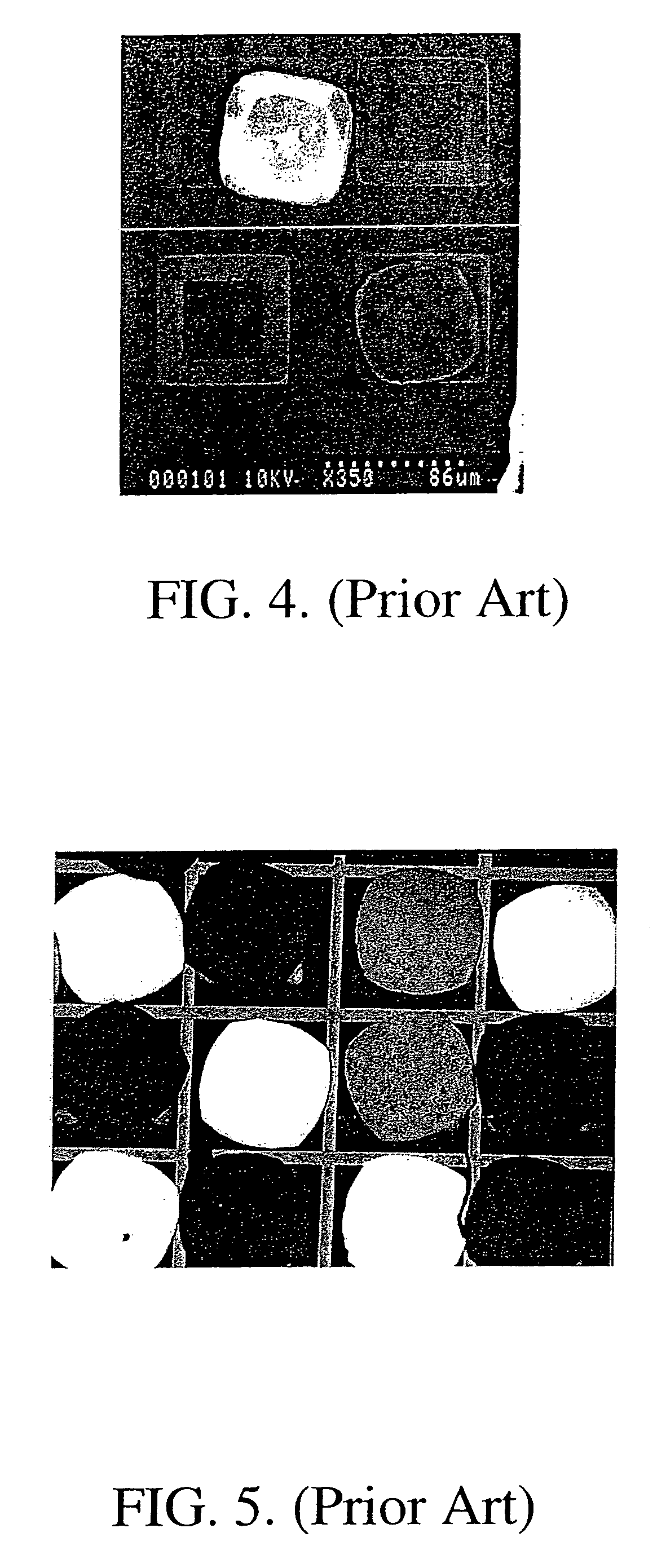Method for assembly of complementary-shaped receptacle site and device microstructures
a technology of complementary shapes and receptacle sites, applied in the field of assembly of hybrid electronic and optoelectronic circuits, can solve the problems of loose fit, difficult to produce complementary shapes between receptacles and device microstructures using this approach, and the method is typically limited to several microns of depth
- Summary
- Abstract
- Description
- Claims
- Application Information
AI Technical Summary
Benefits of technology
Problems solved by technology
Method used
Image
Examples
examples
[0055]To show the operation of the invention, the inventors have assembled microstructure components into recesses formed in polymeric films using the method of the invention. FIG. 8 shows an array of receptacles formed in a polymer film by compression molding using this invention. The stamp used to form this impression was prepared from a silicon (100) wafer that was patterned using a wet-chemical (KOH) etch. The surface of the stamp was also treated chemically to allow easy release from the polymer after molding. This treatment involved making the silicon surface hydrophobic. This involved depositing a continuous Cr / Au film on the stamp surface and then forming an ordered organic monolayer (self-assembled monolayers, SAMS) on the Au surface. A detailed description of the preferred procedures used to fabricate the complementary shaped stamp and microstructures follows next.
[0056]With reference to FIG. 11, the device microstructures are fabricated using a commercially available sili...
PUM
| Property | Measurement | Unit |
|---|---|---|
| length | aaaaa | aaaaa |
| length | aaaaa | aaaaa |
| thicknesses | aaaaa | aaaaa |
Abstract
Description
Claims
Application Information
 Login to View More
Login to View More - R&D
- Intellectual Property
- Life Sciences
- Materials
- Tech Scout
- Unparalleled Data Quality
- Higher Quality Content
- 60% Fewer Hallucinations
Browse by: Latest US Patents, China's latest patents, Technical Efficacy Thesaurus, Application Domain, Technology Topic, Popular Technical Reports.
© 2025 PatSnap. All rights reserved.Legal|Privacy policy|Modern Slavery Act Transparency Statement|Sitemap|About US| Contact US: help@patsnap.com



